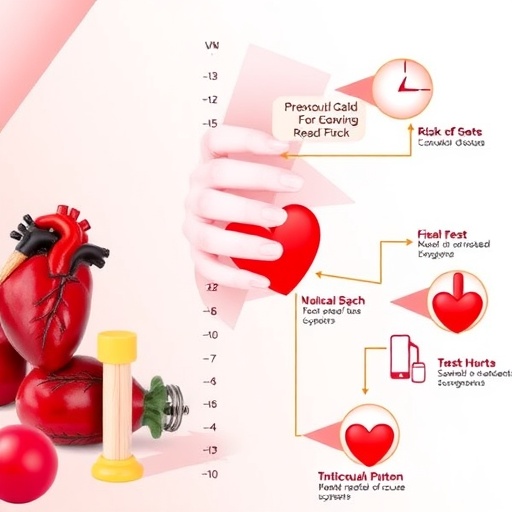Journal of the American Heart Association Report
DALLAS, Jan. 23, 2018 — African Americans who smoke cigarettes are more likely than those who don’t smoke to develop peripheral artery disease, according to new research in Journal of the American Heart Association, the Open Access Journal of the American Heart Association/American Stroke Association.
Peripheral artery disease (PAD) is a narrowing of arteries other then those directly serving the heart. These blood vessels provide blood flow to the arms, legs, the brain and other organs such as the kidneys. If this blood flow is reduced, stroke, kidney failure, erectile dysfunction, pain in the legs when walking and even loss of limbs can occur. PAD is associated with several heart disease risk factors including hypertension, diabetes and obesity.
African Americans are disproportionately affected by PAD, nearly twice as much as non-Hispanic Whites. While cigarette smoking is a recognized PAD risk factor, little is known about its specific impact on African Americans.
“Peripheral artery disease is a major disease burden in the African American population,” said Donald Clark III, M.D., M.P.H., assistant professor of medicine at the University of Mississippi Medical Center in Jackson. “Establishing a clear association between smoking and peripheral artery disease in this particularly vulnerable population can help guide our efforts to lower their risk and to help them improve their health.”
To learn more, researchers analyzed medical records of about 5,300 participants, aged 21 to 84 years, enrolled in the Jackson Heart Study, the largest single-site cohort study investigating cardiovascular risk factors in African Americans. Among the participants who self-reported, smoking status was 68 percent who never smoked (3579 individuals), 19 percent (986) past smokers and 13 percent (693) current smokers.
To determine evidence of PAD, the researchers looked at measures of peripheral artery disease, including: ankle-brachial index, which compares blood pressure in the arteries of the extremities, and computer tomography (CT) scanning to identify calcium build-up in blood vessels, which can indicate the presence of artery-blocking plaques.
In addition to being twice as likely as non-smokers to have subclinical PAD in their lower extremities, current smokers were eight times more likely to have high calcium build-up in the aorta, the body’s main artery.
The researchers also found an association between the number of cigarettes smoked and the likelihood of PAD. Participants who smoked 20 or more cigarettes a day had significantly higher odds of PAD compared to those who smoked less than 20 cigarettes each day.
The study was conducted through the support of the American Heart Association’s Tobacco Regulation and Addiction Center, as part of a multi-year grant initiative from the U.S. Food and Drug Administration (FDA) and the National Institutes of Health (NIH). The aim of the initiative is to conduct research to document the adverse cardiovascular effects of tobacco products that can inform the FDA’s regulation of these products, to learn more about the attitudes and behaviors associated with tobacco use and to help shape effective communication about the health effects of tobacco products. The Association’s Center has focused on vulnerable populations in an effort to promote health equity.
“The findings from this study give us strong evidence of the specific debilitating and life-threatening risks African American smokers face, especially the more they smoke,” said Mariell Jessup, M.D., Chief Science and Medical Officer of the American Heart Association. “This type of research can be useful in the development of clear messages targeted to our African American population to underscore the real physical costs of tobacco product use.”
###
Co-authors are Loretta R. Cain, Ph.D.; Michael J. Blaha, M.D., M.P.H.; Andrew P. DeFilippis, M.D., M.Sc.; Robert J. Mentz, M.D.; Daisuke Kamimura, M.D., Ph.D.; Wendy B. White, Ph.D.; Kenneth R. Butler, Ph.D.; Rose M. Robertson, M.D.; Aruni Bhatnagar, Ph.D.; Javed Butler, M.D.; M.P.H., M.B.A.; Adolfo Correa, M.D., M.P.H., Ph.D.; Emelia J. Benjamin, M.D., Sc.M.; and Michael E. Hall, M.D., M.Sc. Author disclosures are on the manuscript.
Additional Resources:
Available multimedia is on right column of release link – https:/
After January 23, view the manuscript online.
Statements and conclusions of study authors published in American Heart Association scientific journals are solely those of the study authors and do not necessarily reflect the association’s policy or position. The association makes no representation or guarantee as to their accuracy or reliability. The association receives funding primarily from individuals; foundations and corporations (including pharmaceutical, device manufacturers and other companies) also make donations and fund specific association programs and events. The association has strict policies to prevent these relationships from influencing the science content. Revenues from pharmaceutical and device corporations and health insurance providers are available at http://www.
About the American Heart Association
The American Heart Association is a leading force for a world of longer, healthier lives. With nearly a century of lifesaving work, the Dallas-based association is dedicated to ensuring equitable health for all. We are a trustworthy source empowering people to improve their heart health, brain health and well-being. We collaborate with numerous organizations and millions of volunteers to fund innovative research, advocate for stronger public health policies, and share lifesaving resources and information. Connect with us on heart.org, Facebook, Twitter or by calling 1-800-AHA-USA1.
Media Contact
Cathy Lewis
[email protected]
214-706-1324
https:/




